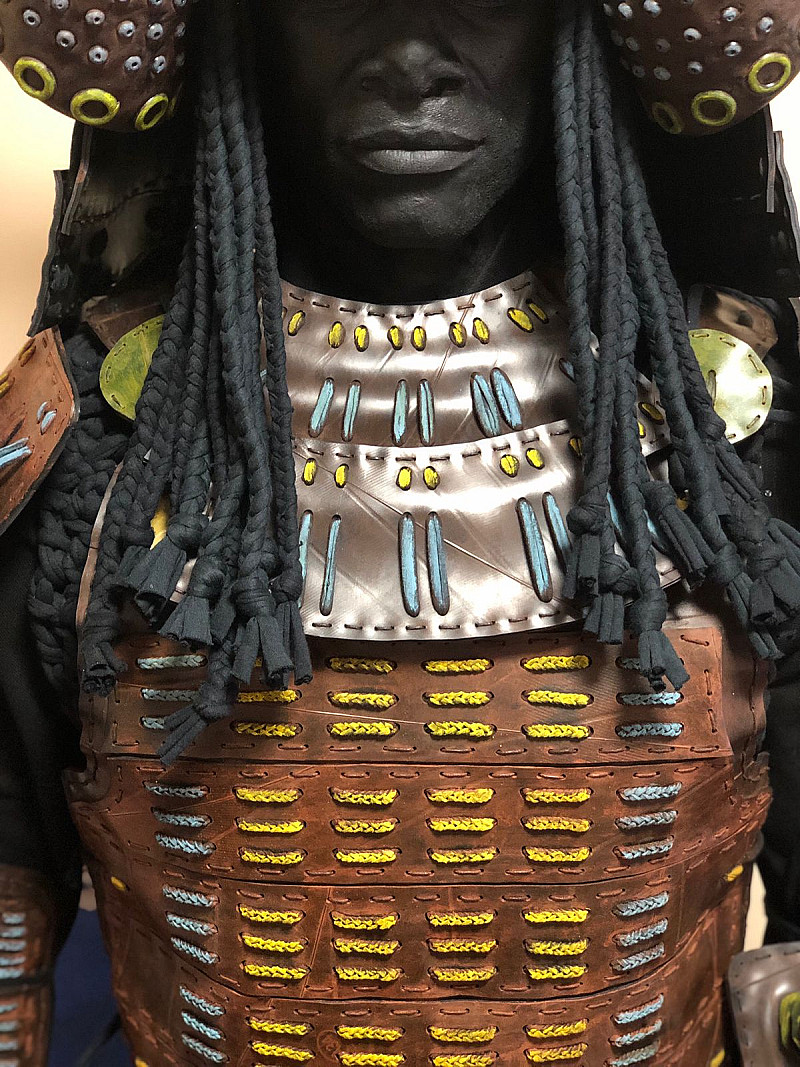- Obsidian Samurai XXXI
- Nicola Roos
- Polyurethane plastic, used inner tyre tubes, stainless steel, aluminium, wood, polyurethane foam, nails, glass, epoxy resin, cotton cloth, cotton cord, cotton rope, thermoplastic, wax, faux suede, beads.
- 204.2 x 810 x 820 centimeters
Artist Statement
Since discovering recycled rubber tyre tubing in early 2015, I have focused on life-size figurative sculptural installations. My work investigates the origins of civilization and society, as well as the ever- changing politics of national identity, collective memory, and cultural belonging in a postcolonial world. The inspiration for my 2015 debut installation, No Man’s Land, was Yasuke, the only dark-skinned Samurai ever recorded in history. Yasuke's legacy of cross-cultural exchange highlights the transient fixity of culture and tradition, sparking my interest in colonial history and the commemoration of obscure individuals. Yasuke's narrative and its socio-cultural implications resonate deeply with my exploration of identity and belonging. My Yasuke sculptures reflect the themes of 'Take A Stand' by challenging preconceived notions of cultural purity and highlighting the dynamic, interconnected nature of modern identity. Beck, Joost, and Adam argue that traditional Western distinctions no longer apply straightforwardly to contemporary cultures. Cultural change, driven by socio-economic, historical, and political forces, leads to new syntheses in language, religion, and other domains, creating individualism-collectivism. James Clifford's concept of ethnographic modernity describes an increasingly common state of rootlessness and cultural interconnectivity, where traditional boundaries dissolve and new, hybrid identities emerge. My sculptures of Yasuke represent both an indigenous cultural cessation and a shared future. By bringing Yasuke to life through my art, I aim to honor his legacy and provoke contemplation about our collective cultural trajectory. My work invites viewers to reflect on the complexities of identity, the fluidity of cultural boundaries, and the importance of acknowledging and preserving diverse histories. Through the powerful imagery of Yasuke, I strive to take a stand against cultural erasure and advocate for a more inclusive understanding of our shared human experience.





